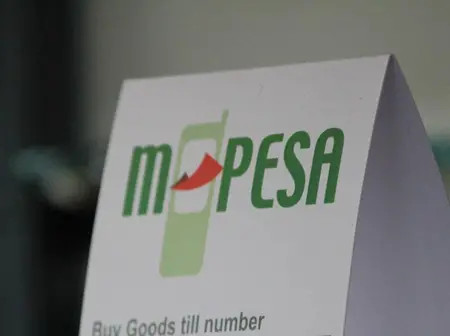For nearly two decades, M-Pesa has operated like essential infrastructure and untouchable monopoly at the same time — a utility wrapped in a business model. Now, for the first time since Covid-era fee waivers, the Central Bank of Kenya (CBK) is preparing a permanent intervention: a CBK mobile money fee cap that would cut average transaction costs from Sh23 to Sh10 by 2028.
On paper, this is a consumer victory. In reality, it’s a reshuffling of economic power.
Safaricom, which makes nearly Sh63 billion annually from person-to-person transfers alone, is being told that what was once its most reliable income stream is now a regulated public good. Airtel Money, perpetually cast as the challenger brand, could suddenly find parity not through competition — but legislation. Parliament is now the new pricing battlefield.
This isn’t just about affordability. It’s about who gets to define financial justice in a digital economy built on private rails but treated like public infrastructure.
CBK has been signaling discomfort for years. Mobile money usage is still high, but growth has stalled, especially in rural and low-income segments. Why? The regulator quietly admits what Kenyans complain about openly — fees feel like a tax on survival.
But this move isn’t purely altruistic. A future where financial inclusion stagnates is a political risk. A future where banks regain dominance is a policy failure. And a future where Safaricom controls not just payments but credit, insurance, savings, forex, investment, and lending scores is a regulatory nightmare.
By fixing transfer costs, CBK is doing more than offering relief. It is reasserting sovereignty over the country’s digital bloodstream.
Lower transfer fees sound like an obvious win — until you pause and ask who gets to decide what “affordable” really means. Once pricing power moves from private operators to regulators, the economics of mobile money start to shift in unpredictable ways.
Three broad outcomes come into view.
In the best case, cheaper person-to-person transfers trigger higher transaction volumes. Low-income users feel less hesitation sending small amounts, digital payments become habitual rather than occasional, and telcos make up for slimmer margins through scale. Kenya inches closer to India’s UPI-style model — high frequency, low friction, mass participation.
In the less flattering version, operators quietly claw back revenue through other channels — higher withdrawal charges, merchant service fees, lending interest tweaks or bundled “value-added” tiers that weren’t necessary before. What looks like consumer relief at the surface becomes a maze of new costs elsewhere.
And then there’s the scenario few people acknowledge openly: data extraction. If telcos can’t fully monetize the transfer itself, they monetize the person making it. The price of sending money may fall in shillings, but rise in what users unknowingly trade away — patterns, preferences, social networks, creditworthiness. The fee disappears. The profiling deepens.
Safaricom isn’t going to watch its golden goose shaved feather by feather. Internally, three survival strategies are likely already on the whiteboard:
The company won’t fight the cap in public — not when inflation is biting — but it will negotiate aggressively on where the cap line is drawn. Lobbying will shift from “whether” to “what counts as a chargeable transfer.”
For Airtel, this is poetic justice. It already waives on-network transfers to lure users. A regulated ceiling could neutralize Safaricom’s pricing advantages.
But there’s a twist: if price is no longer a competitive differentiator, then what is? Speed? Reliability? Agency reach? Trust? Brand warmth?
Fintechs face their own dilemma. Interoperability and lower transfer costs are great — unless your entire proposition was “cheaper than M-Pesa.” Once price is equalized, services like Sendwave, T-Kash, or smaller digital wallets must justify relevance beyond discount economics.
The cap equalizes — but equalization is not liberation. It could expose weakness.
MPs will almost certainly embrace this move — what better populist message than “We made sending money cheaper for millions”?
But they will face awkward questions:
The cap may begin as consumer protection — but it could quickly evolve into a de facto renegotiation of M-Pesa’s license to print money.
This is the philosophical heart of the matter. If mobile money is infrastructure, it should be priced like water or electricity — affordable, predictable, and transparently regulated. If it’s a business, operators should be free to innovate and profit without political interference.
Kenya — and perhaps Africa at large — is now entering the fight over what digital finance fundamentally is.
The CBK mobile money fee cap is not just an economic decision. It is a declaration that access to digital liquidity is a right — not a luxury. But once that declaration is made, the rest of the rules must follow. Who maintains the pipes? Who controls the gates? Who benefits from the flow?
Those answers will define not just telco earnings, but Kenya’s entire financial identity.
If history is any guide, Kenya won’t retreat from digital innovation just because regulation stepped in. The real risk isn’t stagnation — it’s miscalibration.
A fee cap that is too soft changes nothing. One that is too aggressive could break the very system it wants to democratize.
But if CBK threads the needle — enforcing fairness while incentivizing reinvention — Kenya could become the first African nation to turn a private fintech empire into a balanced public utility without breaking it.
That’s the wager.
And the clock to 2028 has officially started ticking.

Leave a Reply